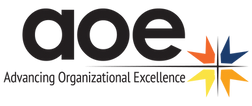Using knowledge blocks to increase AI accuracy
- Emily Emanuelsen

- Oct 24
- 3 min read
Learn how to create and use knowledge blocks to refine AI outputs for the AEC industry.
Generative artificial intelligence offers significant efficiency gains, yet many marketers, especially in the architecture, engineering and construction (AEC) industry, face a common challenge: receiving generic or inaccurate results. The solution lies not in abandoning these powerful tools, but in refining how we use them—specifically, by using what is known as “knowledge blocks.”
What are knowledge blocks in the context of AI?
Knowledge blocks are curated, pre-written collections of essential information about an organization, its services, its clients and its strategic objectives. These are blocks of text that are copied and pasted directly into an AI prompt. They function as a primary source for the AI, guiding the model's response away from generalized data and toward organization-specific details.
Having ready-made knowledge blocks saves significant time in the prompt engineering process. Instead of writing detailed context for every new request, you can quickly copy and paste the relevant block from your own files. AI models can "hallucinate" or fabricate information that sounds plausible but is incorrect. By providing the AI with correct data upfront through a knowledge block, organizations drastically reduce this risk.
Essential knowledge blocks for the AEC industry
Every AEC marketing team should develop a set of core knowledge blocks to guide their AI tools. Below are five blocks that provide a solid foundation for most marketing tasks.
Organization profile/about us – This block contains the core identity of your organization. It should be a comprehensive summary that the AI can use to generate descriptions for proposals, award submissions or website updates. This knowledge block should contain content such as your organization’s mission, vision, values, company history, unique value proposition and key differentiators.
Services and specializations – Detailing what your organization offers ensures the AI can create targeted content for landing pages, brochures or service-specific campaigns. Content may include a detailed list of all services, technical specializations and core market sectors.
Ideal customer profile (ICP) – An ICP knowledge block allows the AI to tailor marketing copy, blog posts or social media content to your target clients. This will include a profile outlining the demographics, needs, pain points and goals of your organization’s most valuable clients.
Project portfolio and case studies – This block equips the AI with examples of your organization's success, which can be used to build credibility in new proposals or marketing materials. This includes summaries of key projects, including scope, challenges, solutions, outcomes and client testimonials, as well as mentions of high-profile or award-winning work.
Go/no-go decision rubric – For companies that evaluate bids, this knowledge block can accelerate the process. It allows an AI to score new opportunities against your organization's strategic goals. This block includes the organization's internal criteria for evaluating requests for proposals (RFP), including preferred project types, financing models, required certifications (e.g., LEED) and location. Once you have built this block, you can quickly analyze new RFPs to determine if they fit with the organization's capabilities and strategic objectives.
Now that you know which blocks are essential, let’s explore the step-by-step process of building these powerful tools to enhance your AI’s accuracy and efficiency.
Step 1: Identify and gather core information
Begin by collecting foundational documents that define your organization. These include strategic plans, past proposals, existing marketing materials and current website content. These documents contain the raw information you will distill into your knowledge blocks.
Step 2: Draft each knowledge block
Using the information gathered, write clear and concise summaries for each category identified in the previous section. Use bullet points and distinct headings to structure the information. This format is easily understood by both humans and AI models, leading to more accurate interpretations. (Hint: You can have AI do this step for you.)
Step 3: Organize for accessibility
Store the completed knowledge blocks in a central, easily accessible location. The key is to ensure the entire marketing team can find and use them consistently.
Step 4: Integrate into AI prompts
Incorporate the knowledge blocks directly into your AI prompts. Provide simple instructions that tell the AI how to use the information. For example: "You are an expert AEC proposal writer. Using the attached Organization Profile Knowledge Block and Project Case Study Knowledge Block, draft an introduction for a proposal that emphasizes sustainability, as prioritized in the RFP."
Step 5: Review and refine regularly
Knowledge blocks are living documents. They should be reviewed and updated quarterly or whenever there are significant changes to the organization's strategy, services or project portfolio. Keeping them current ensures the AI is always working with the most accurate information.
Mastering the use of knowledge blocks is a key skill for anyone looking to increase the efficiency of their content. If you would like to learn more about knowledge blocks or any other AI topics, visit the AOE blog and enter “AI” in the search box. Or, if you would like personalized assistance, contact our team.
.png)